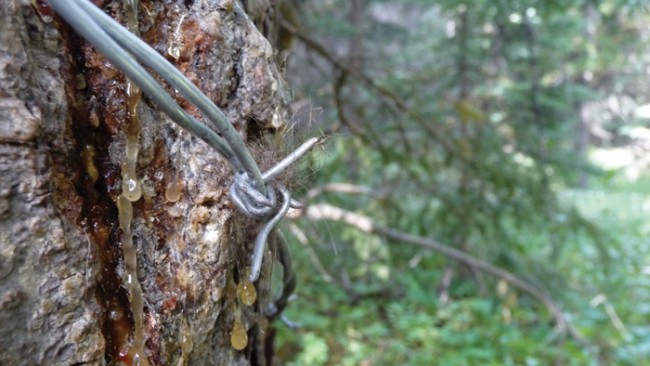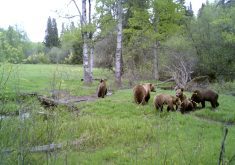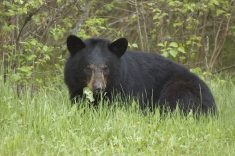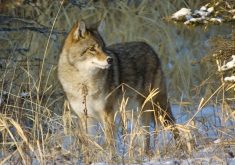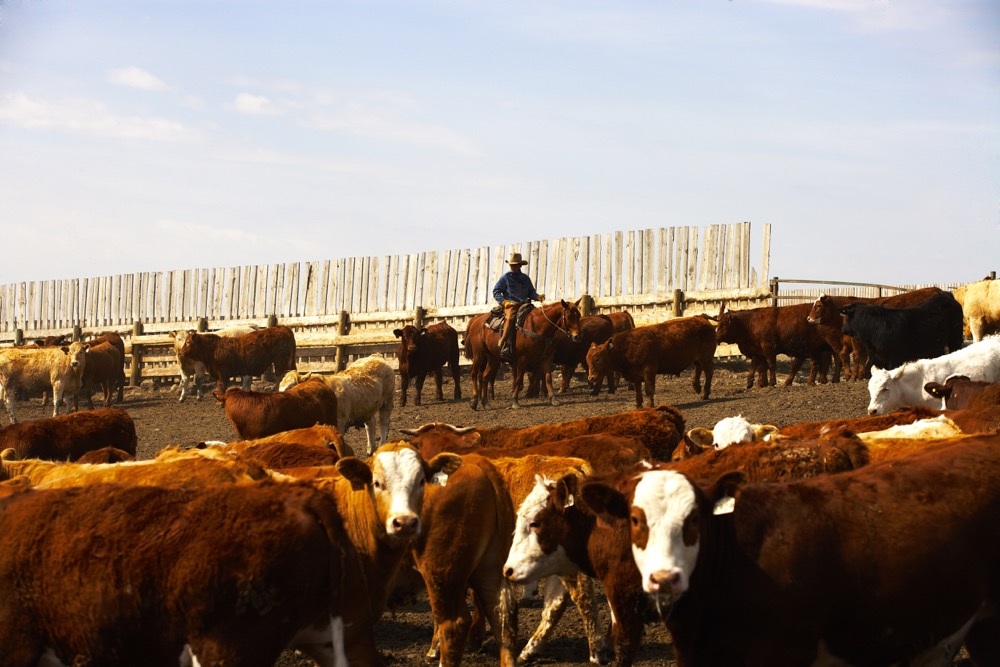You can’t manage what you don’t measure is as true for wildlife as it is for agriculture, but counting grizzly bears is a bit tricky.
Andrea Morehouse with Alberta Environment at Pincher Creek is heading up a unique grizzly monitoring project in the southwest that collects hair samples from natural grizzly rub objects in Alberta’s bear management area six (BMA6) for DNA analysis to give bear biologists a better idea of bear densities, distribution and travel patterns across the Alberta section of a large grizzly range that takes in British Columbia and Montana.
Read Also

Body condition, nutrition and vaccination for brood cows
One of the remarkable events of the past century related to ranching has been the genetic evolution of brood cows….
BMA6 runs from Highway 3 south to the Montana border and from the British Columbia-Alberta border through the grizzly bear range around Pincher Creek, Cardston and the core habitat area in Waterton Lakes National Park.
If this survey method is successful, it could be used to monitor grizzly populations in other bear management areas.
Rub objects are places where bears stop for a good scratch from time to time and biologists believe rubbing could be a way bears communicate with one another, Morehouse explains. Bears tend to stick to easy travel paths, so the most likely places to find rub objects are along backroads, trails, cutlines, utility lines and fences.
Approximately 900 rub objects have been identified on public and private land across the study area during the four collection seasons, which run from mid-May to mid-November. The first samples were collected in 2011 and this year is the fourth and final season.
Wildlife Genetics International at Nelson, B.C., does the DNA analyses of the hair samples to identify individual grizzly bears.
The annual survey numbers aren’t population estimates, Morehouse says. They only identify the number of individual bears that lived in or passed through the area that season.
Finally, the annual survey numbers will be entered into the computer population modelling program to roll out the official population estimate. That won’t be known until next summer when hair samples collected this summer have been processed.
In September, Morehouse was working on a preliminary population estimate for Alberta Environment’s new five-year grizzly recovery plan, but it may not be ready for the draft expected to be released this fall for public comment.
So far, 177 individual grizzlies have been detected in BMA6. That’s 6.5 times more than the 27 identified in 2007, the last time the area was sampled, which yielded a population estimate of 51 bears that year.
There has been skepticism about the numbers gathered during the 2004-08 Alberta grizzly bear survey because of the capture-mark-recapture population model used to estimate the population from the DNA-rub object samples. Back then bears were coaxed to sampling stations that consisted of piles of woody debris coated in scent lure and surrounded by barbed wire for scratching, rather than using a survey team to collect hair from natural rub objects.
The provincial grizzly population back then was estimated at 691 bears, plus an estimated 70 in other areas of the Banff and Jasper national parks.
That figure raised concerns among conservation groups who claimed the International Union for the Conservation of Nature guidelines required the province to maintain a minimum 1,000 breeding bears. In response, Alberta listed grizzly bears as a threatened species and developed a five-year recovery plan (2008-13) that extended the 2006 hunting ban to the present day.
Alberta Beef Producers (ABP) recently challenged the accuracy of the 2004-08 numbers based on the growing number of ranchers reporting damage to fences, feed bins and cattle over the past decade.
Policy analyst Fred Hays says ABP has more confidence in the current survey scheme.
As for the new recovery plan, ABP’s view is that it shouldn’t cover the province with one blanket. “In areas where there are bear-livestock problems, there should be more management and control to push bears back into secure grizzly habitat, such as the mountains, and let the population grow there,” Hays says.
Survey results to date
Producers got behind the program in 2012, allowing access to another 302 rub objects on private and lease land. Those, plus others found in the forest reserve and the park, brought the total to 831. The public sites were checked eight times during the summer and fall and the private sites twice, yielding 4,200 hair samples. Another 300 were submitted by ranchers and government field staff. DNA results identified 122 grizzlies — 72 males and 50 females — with 40 of them being among the 51 identified the previous year.
The 2013 field season was the first for sampling across all of BMA6. A team of six visited 879 rub objects on 43 routes, first to clean them and seven times to collect samples. DNA results identified 128 separate bears — 71 males and 57 females. Thirty-two of them had visited the area in 2011 and 78 were there in 2012.
This year, the crew has been checking 900 rub objects on the same schedule across the entire study area.



